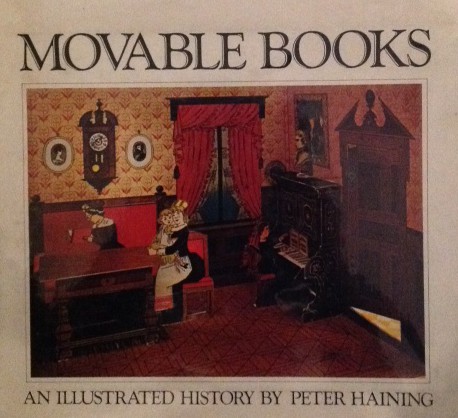Inspiring Young Readers
 posted on 10 Jan 2016
posted on 10 Jan 2016
Movable Books : An Illustrated History by Peter Haining
We have become quite accustomed to seeing interactive books aimed at children of all ages. Go into any bookshop and you'll almost certainly find pop-up books, lift-the-flap books, books with die-cut shapes removed from some part of the page, pages with differently textured finishes and even books with sound. It's tempting to think that these sophisticated entertainments are a very modern development but Peter Haining's fabulous book shows us that this isn't the case.
Even the very earliest books produced specifically for children had authors and publishers who wanted to excite their readers with movement and were as creative as they could be within the technical constraints of the publishing industry. Movable books is a term that has been used to describe a whole range of different effects but it probably all started with the diorama - a book that folds out in connected panels and tells a sequential story. However, it wasn't long before significant improvements in paper technology allowed movement to be simulated by pulling tabs - something we are perfectly familiar with today and where the production process has hardly changed over the years.
The search for novelty meant that innovation was highly prized and the very first three dimensional books began to be produced. Books of this kind of complexity are relatively expensive to produce and can very easily be damaged and so the price of these books would reflect this - it is likely that you'd find these early movable books in the nursery rooms of the comparatively affluent middle and upper class families.
Finding these books now in good condition is understandably very difficult. You do see quite a lot of these books around but nearly always in a distressed condition and collectors have to compromise to get versions of some of the most rare of these movables. So this book is a gem if you're interested in this genre because there are examples here that you may not ever see elsewhere and they are supplemented by a very accessible and interesting text written by Haining.
We purchased our copy recently for a bargain price of £12.50 but I think we were lucky. We've seen copies before for prices up to £60 and others that we could afford but which were themselves damaged. It's a big book and so the cost of postage will add to the cost but you can find them on the internet for under £30.00. I seriously recommend it to anyone who is interested in the history of children's books.
Terry Potter
January 2016





